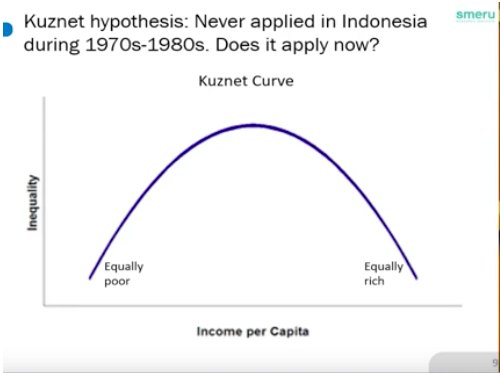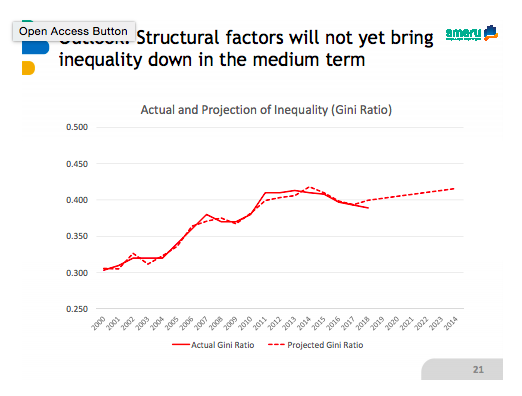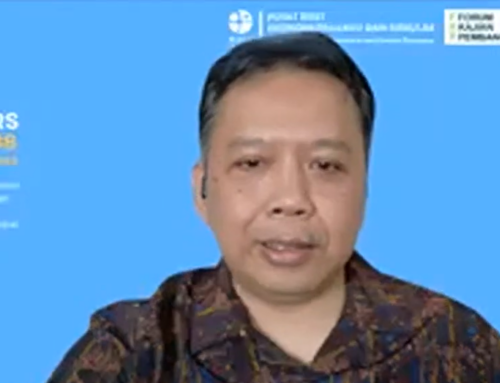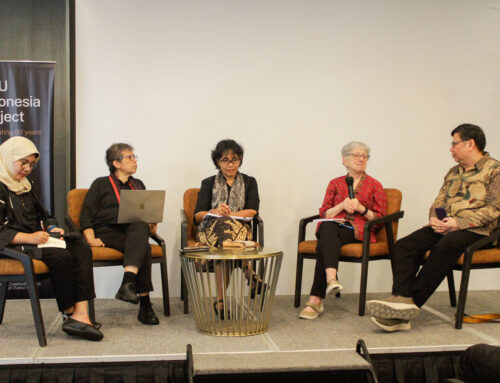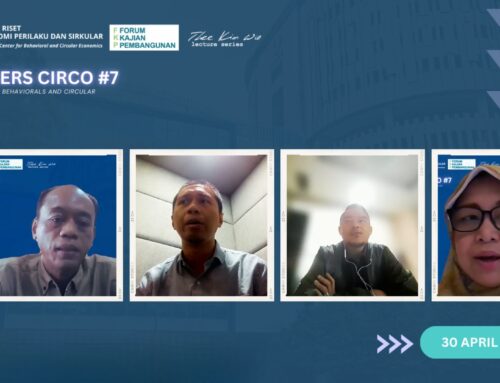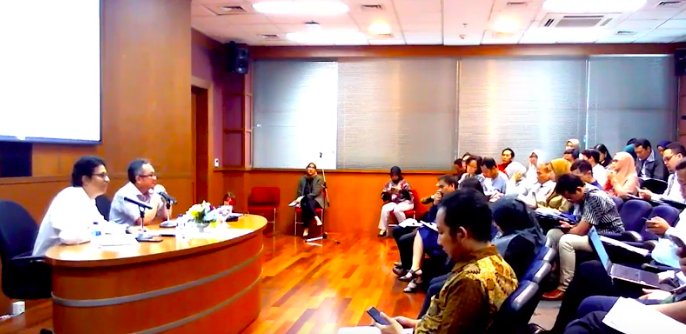 Rapid economic growth has put discussions of inequality on the table. Despite many attempts to understand its nature, there has yet to be a study with a well-defined model to find the main determinants and consequences of increasing inequality in Indonesia. In an attempt to answer these questions, Asep Suryahadi (The SMERU Research Institute) presented his research with Ridho Al Izzati and Daniel Suryadarma at an FKP Event hosted by Bank Indonesia Institute on Wednesday, 20 February 2019.
Rapid economic growth has put discussions of inequality on the table. Despite many attempts to understand its nature, there has yet to be a study with a well-defined model to find the main determinants and consequences of increasing inequality in Indonesia. In an attempt to answer these questions, Asep Suryahadi (The SMERU Research Institute) presented his research with Ridho Al Izzati and Daniel Suryadarma at an FKP Event hosted by Bank Indonesia Institute on Wednesday, 20 February 2019.
The Kuznets hypothesis proposes that the relationship between inequality and economic growth is an inverted ‘u’ curve, where as the economy grows, some groups will get richer than others causing inequality to increase up to a point, after which inequality decreases due to the overall improvement of the economic condition. However, historical data from Indonesia’s rapid economic growth in the 1970s and 1980s show that the rate of inequality did not rise during that era.
Crises are also often considered as a cause of increased inequality, yet the 1997 and 2008 crises actually led to a decrease in inequality in Indonesia, as did other crises in other parts of the world. In fact, Asep Suryahadi asserted that the 1997 financial crisis has delayed inequality by 8 years.
Referring to Bourguignon et al. (2001) and Pieters (2011), Asep Suryahadi formulated four main factors that explain 80% of the rate of inequality in Indonesia, which are education level, economic sector, rural-urban location, and informal-formal worker. In the context of Indonesia, the structural change in education and the formalization of the economy contribute the highest among the four factors. These factors affect the rate of inequality through two channels, which are endowment effect (i.e. the change in the composition of a structural factor) and price effect (i.e. the change in return to a structural factor). Suryahadi also found that the endowment effect is more dominant than the price effect.
It is worth noting that economic growth has affected everyone in the economic spectrum positively. Then if everyone benefits from economic growth, why is inequality still a concern? Referring to a previous SMERU research by Yumna et al. (2014), increased inequality is only positively correlated with economic growth up to a certain point, after which, an increase in the Gini ratio will reduce economic growth. Moreover, increased inequality is also linked to reduced power in eradicating poverty as well as an increase in violent social conflict. Therefore we should all care about inequality in Indonesia.
Using the structural model, Asep Suryahadi estimated that the rate of inequality would continue to increase in the near future. Moreover, government policies that are targeted to reduce inequality such as conditional cash transfers will only have a limited impact. In order to reduce the rate of inequality, Suryahadi recommended that the government further expand education services, foster industrial development, formalize economic activities further, and not fear the increasing rate of urbanization.
For the complete presentation and Q&A session, please refer to the video and materials provided.
